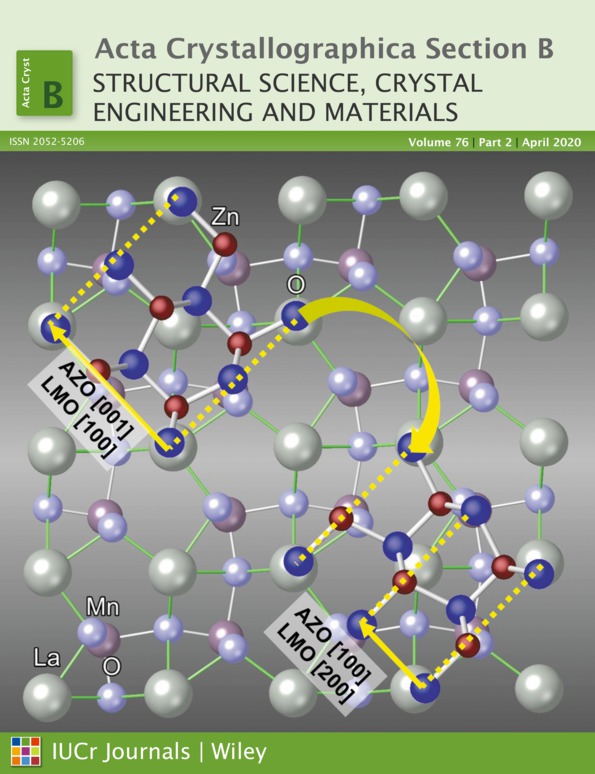Pancake-bonding of semiquinone radicals under variable temperature and pressure conditions
Abstract
The effects of temperature (100–370 K) and pressure (0–6 GPa) on the non-localized two-electron multicentric covalent bonds (`pancake bonding') in closely bound radical dimers were studied using single-crystal X-ray diffraction on a 4-cyano-N-methylpyridinium salt of 5,6-dichloro-2,3-dicyanosemiquinone radical anion (DDQ) as the sample compound. On cooling, the anisotropic structural compression was accompanied by continuous changes in molecular stacking; the discontinuities in the changes in volume and b and c cell parameters suggest that a phase transition occurs between 210 and 240 K. At a pressure of 2.55 GPa, distances between radical dimers shortened to 2.9 Å, which corresponds to distances observed in extended π-bonded polymers. Increasing pressure further to 6 GPa reduced the interplanar separation of the radicals to 2.75 Å. This may indicate that the covalent component of the interaction significantly increased, in accordance with the results of DFT calculations reported elsewhere [Molčanov et al. (2019), Cryst. Growth Des.19, 391–402].




